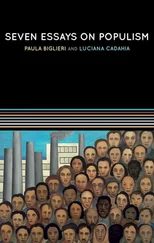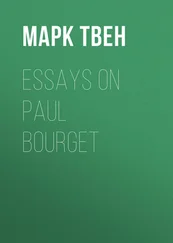Paul Graham - Essays
Здесь есть возможность читать онлайн «Paul Graham - Essays» весь текст электронной книги совершенно бесплатно (целиком полную версию без сокращений). В некоторых случаях можно слушать аудио, скачать через торрент в формате fb2 и присутствует краткое содержание. Жанр: Прочая околокомпьтерная литература, на английском языке. Описание произведения, (предисловие) а так же отзывы посетителей доступны на портале библиотеки ЛибКат.
- Название:Essays
- Автор:
- Жанр:
- Год:неизвестен
- ISBN:нет данных
- Рейтинг книги:4 / 5. Голосов: 1
-
Избранное:Добавить в избранное
- Отзывы:
-
Ваша оценка:
- 80
- 1
- 2
- 3
- 4
- 5
Essays: краткое содержание, описание и аннотация
Предлагаем к чтению аннотацию, описание, краткое содержание или предисловие (зависит от того, что написал сам автор книги «Essays»). Если вы не нашли необходимую информацию о книге — напишите в комментариях, мы постараемся отыскать её.
Essays — читать онлайн бесплатно полную книгу (весь текст) целиком
Ниже представлен текст книги, разбитый по страницам. Система сохранения места последней прочитанной страницы, позволяет с удобством читать онлайн бесплатно книгу «Essays», без необходимости каждый раз заново искать на чём Вы остановились. Поставьте закладку, и сможете в любой момент перейти на страницу, на которой закончили чтение.
Интервал:
Закладка:
Once you start talking about audiences, you don't have to argue simply that there are or aren't standards of taste. Instead tastes are a series of concentric rings, like ripples in a pond. There are some things that will appeal to you and your friends, others that will appeal to most people your age, others that will appeal to most humans, and perhaps others that would appeal to most sentient beings (whatever that means).
The picture is slightly more complicated than that, because in the middle of the pond there are overlapping sets of ripples. For example, there might be things that appealed particularly to men, or to people from a certain culture.
If good art is art that interests its audience, then when you talk about art being good, you also have to say for what audience. So is it meaningless to talk about art simply being good or bad? No, because one audience is the set of all possible humans. I think that's the audience people are implicitly talking about when they say a work of art is good: they mean it would engage any human. [4]
And that is a meaningful test, because although, like any everyday concept, "human" is fuzzy around the edges, there are a lot of things practically all humans have in common. In addition to our interest in faces, there's something special about primary colors for nearly all of us, because it's an artifact of the way our eyes work. Most humans will also find images of 3D objects engaging, because that also seems to be built into our visual perception. [5] And beneath that there's edge-finding, which makes images with definite shapes more engaging than mere blur.
Humans have a lot more in common than this, of course. My goal is not to compile a complete list, just to show that there's some solid ground here. People's preferences aren't random. So an artist working on a painting and trying to decide whether to change some part of it doesn't have to think "Why bother? I might as well flip a coin." Instead he can ask "What would make the painting more interesting to people?" And the reason you can't equal Michelangelo by going out and buying a blank canvas is that the ceiling of the Sistine Chapel is more interesting to people.
A lot of philosophers have had a hard time believing it was possible for there to objective standards for art. It seemed obvious that beauty, for example, was something that happened in the head of the observer, not something that was a property of objects. It was thus "subjective" rather than "objective." But in fact if you narrow the definition of beauty to something that works a certain way on humans, and you observe how much humans have in common, it turns out to be a property of objects after all. You don't have to choose between something being a property of the subject or the object if subjects all react similarly. Being good art is thus a property of objects as much as, say, being toxic to humans is: it's good art if it consistently affects humans in a certain way.
So could we figure out what the best art is by taking a vote? After all, if appealing to humans is the test, we should be able to just ask them, right?
Well, not quite. For products of nature that might work. I'd be willing to eat the apple the world's population had voted most delicious, and I'd probably be willing to visit the beach they voted most beautiful, but having to look at the painting they voted the best would be a crapshoot.
Man-made stuff is different. For one thing, artists, unlike apple trees, often deliberately try to trick us. Some tricks are quite subtle. For example, any work of art sets expectations by its level of finish. You don't expect photographic accuracy in something that looks like a quick sketch. So one widely used trick, especially among illustrators, is to intentionally make a painting or drawing look like it was done faster than it was. The average person looks at it and thinks: how amazingly skillful. It's like saying something clever in a conversation as if you'd thought of it on the spur of the moment, when in fact you'd worked it out the day before.
Another much less subtle influence is brand. If you go to see the Mona Lisa, you'll probably be disappointed, because it's hidden behind a thick glass wall and surrounded by a frenzied crowd taking pictures of themselves in front of it. At best you can see it the way you see a friend across the room at a crowded party. The Louvre might as well replace it with copy; no one would be able to tell. And yet the Mona Lisa is a small, dark painting. If you found people who'd never seen an image of it and sent them to a museum in which it was hanging among other paintings with a tag labelling it as a portrait by an unknown fifteenth century artist, most would walk by without giving it a second look.
For the average person, brand dominates all other factors in the judgement of art. Seeing a painting they recognize from reproductions is so overwhelming that their response to it as a painting is drowned out.
And then of course there are the tricks people play on themselves. Most adults looking at art worry that if they don't like what they're supposed to, they'll be thought uncultured. This doesn't just affect what they claim to like; they actually make themselves like things they're supposed to.
That's why you can't just take a vote. Though appeal to people is a meaningful test, in practice you can't measure it, just as you can't find north using a compass with a magnet sitting next to it. There are sources of error so powerful that if you take a vote, all you're measuring is the error.
We can, however, approach our goal from another direction, by using ourselves as guinea pigs. You're human. If you want to know what the basic human reaction to a piece of art would be, you can at least approach that by getting rid of the sources of error in your own judgements.
For example, while anyone's reaction to a famous painting will be warped at first by its fame, there are ways to decrease its effects. One is to come back to the painting over and over. After a few days the fame wears off, and you can start to see it as a painting. Another is to stand close. A painting familiar from reproductions looks more familiar from ten feet away; close in you see details that get lost in reproductions, and which you're therefore seeing for the first time.
There are two main kinds of error that get in the way of seeing a work of art: biases you bring from your own circumstances, and tricks played by the artist. Tricks are straightforward to correct for. Merely being aware of them usually prevents them from working. For example, when I was ten I used to be very impressed by airbrushed lettering that looked like shiny metal. But once you study how it's done, you see that it's a pretty cheesy trick—one of the sort that relies on pushing a few visual buttons really hard to temporarily overwhelm the viewer. It's like trying to convince someone by shouting at them.
The way not to be vulnerable to tricks is to explicitly seek out and catalog them. When you notice a whiff of dishonesty coming from some kind of art, stop and figure out what's going on. When someone is obviously pandering to an audience that's easily fooled, whether it's someone making shiny stuff to impress ten year olds, or someone making conspicuously avant-garde stuff to impress would-be intellectuals, learn how they do it. Once you've seen enough examples of specific types of tricks, you start to become a connoisseur of trickery in general, just as professional magicians are.
What counts as a trick? Roughly, it's something done with contempt for the audience. For example, the guys designing Ferraris in the 1950s were probably designing cars that they themselves admired. Whereas I suspect over at General Motors the marketing people are telling the designers, "Most people who buy SUVs do it to seem manly, not to drive off-road. So don't worry about the suspension; just make that sucker as big and tough-looking as you can." [6]
Читать дальшеИнтервал:
Закладка:
Похожие книги на «Essays»
Представляем Вашему вниманию похожие книги на «Essays» списком для выбора. Мы отобрали схожую по названию и смыслу литературу в надежде предоставить читателям больше вариантов отыскать новые, интересные, ещё непрочитанные произведения.
Обсуждение, отзывы о книге «Essays» и просто собственные мнения читателей. Оставьте ваши комментарии, напишите, что Вы думаете о произведении, его смысле или главных героях. Укажите что конкретно понравилось, а что нет, и почему Вы так считаете.











